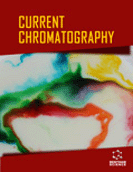Abstract
Background: The currently emerging utilization of biomass for chemicals on an industrial scale is linked to the use of available plant materials, especially of wood and other lignocelluloses. The chemical analysis of biomass for process development and control can be considerably difficult due to the diversity of its constituents, which can cause interferences with the analysis of the target analyte. The capabilities of thin layer chromatography are especially suited for samples that contain a large portion of interfering components, both for quick qualitative screenings and the quantitative analysis of individual components.
Methods: A review of the existing literature on the analysis of wood derived compounds by thin layer chromatography was compiled. An introduction to the general capabilities of thin layer chromatography was added for readers unacquainted to the technique.
Results: Thin layer chromatography has been applied to all wood components: carbohydrates, phenols, lignans and extractives. The analytical aims comprised amongst others the identification of wood and pitch components, changes in wood composition over time or after treatments, and the quantification of individual compounds.
Conclusion: Thin layer chromatography is a very suitable tool for the analysis of wood derived biomass due to its robustness and the ease of detection and hyphenation. It has been used to achieve challenging analytical tasks and can be a well-founded choice to investigate wood derived compounds.
Keywords: Thin layer chromatography, high performance thin layer chromatography, wood, biomass, biorefinery, hyphenation.
 106
106 3
3

















